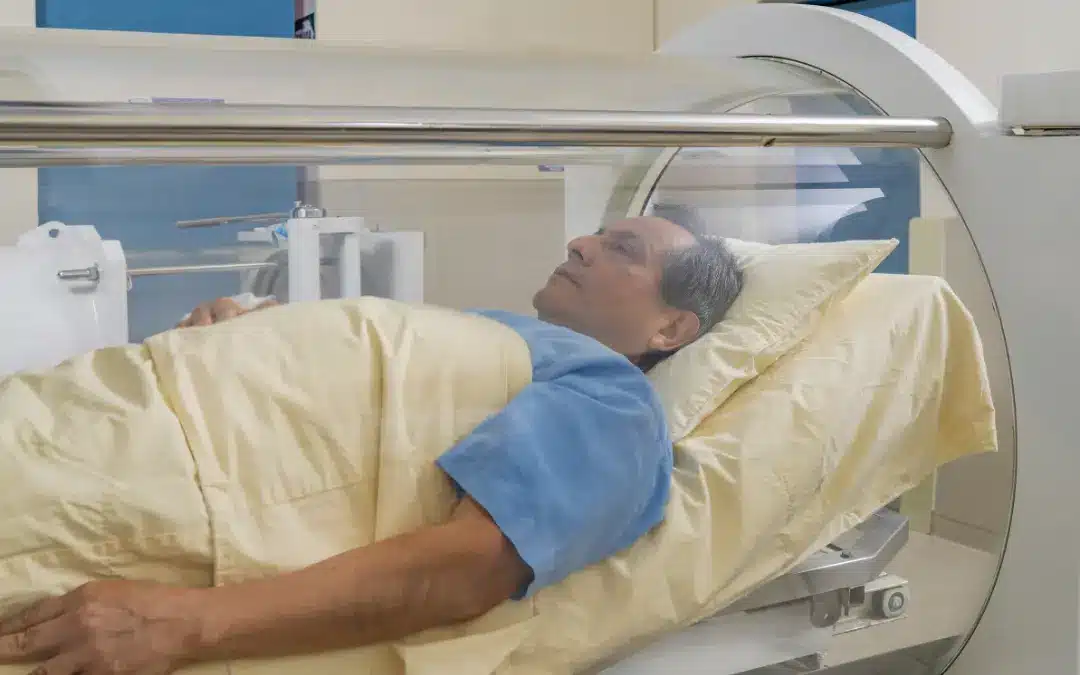September 29, 2023

Scleroderma, a challenging autoimmune condition, presents a unique set of obstacles for those it affects. The excessive deposition of collagen in the subcutaneous tissue and other areas of the body can lead to reduced blood supply, impaired wound healing, and a cascade of complications. However, a beacon of hope is emerging in the form of hyperbaric oxygen therapy (HBOT). Let’s delve into the potential of HBOT to offer relief and healing to those battling scleroderma.
In scleroderma, collagen accumulates in abnormally high concentrations within the body, particularly in the subcutaneous tissue. This can have a profound impact, leading to restricted blood supply to the skin and compromised wound healing. As a result, wounds may fester and become infected, exacerbating the condition. The diminished oxygen delivery to affected areas further complicates the situation.
Hyperbaric oxygen therapy stands out as a promising approach to address the challenges posed by scleroderma. Here’s how it works:
To understand the impact of HBOT on scleroderma, let’s take a closer look at two patient cases:
Patient 1: A 50-year-old ceramic artist with diffuse scleroderma for a decade presented with over 10 open wounds in her upper extremities, persisting for at least six months and resistant to conventional treatments.
Patient 2: A 46-year-old trumpet player with cutaneous scleroderma for seven years reported symptoms of Raynaud’s phenomenon, winter season ulcers on his fingertips, and numbness in his fingers.
Both patients underwent 50 consecutive 90-minute sessions of HBOT in a mild hyperbaric chamber at 1.3 ATA (atmospheres absolute).
While the initial treatments did not yield significant changes, the following outcomes were observed:
While HBOT is not currently an approved treatment for scleroderma, the therapy’s ability to combat ischemia makes it a potential ally in managing the condition. Oxygen diffusion to previously ischemic areas may lead to changes in the number and distribution of capillaries, fostering healing. Additionally, HBOT may ameliorate the chronic autoimmune aspects of scleroderma.
In the world of medical research, HBOT continues to illuminate new paths toward healing and relief for those facing challenging conditions like scleroderma. As we await further studies and clinical trials, the potential for HBOT to provide lasting benefits remains a source of hope for patients and their healthcare providers. The journey towards more effective treatments and improved quality of life is an ongoing one, with HBOT at the forefront of innovation and promise.
Hyperbaric Research & Studies. The Effect of Hyperbaric Oxygen on Scleroderma. Hyperbaric Research & Studies https://hyperbaricstudies.com/the-effect-of-hyperbaric-oxygen-on-scleroderma
Share on:
A free, open discussion group to explore hyperbaric oxygen therapy, compare home chamber brands, access expert info, and get exclusive member discounts.